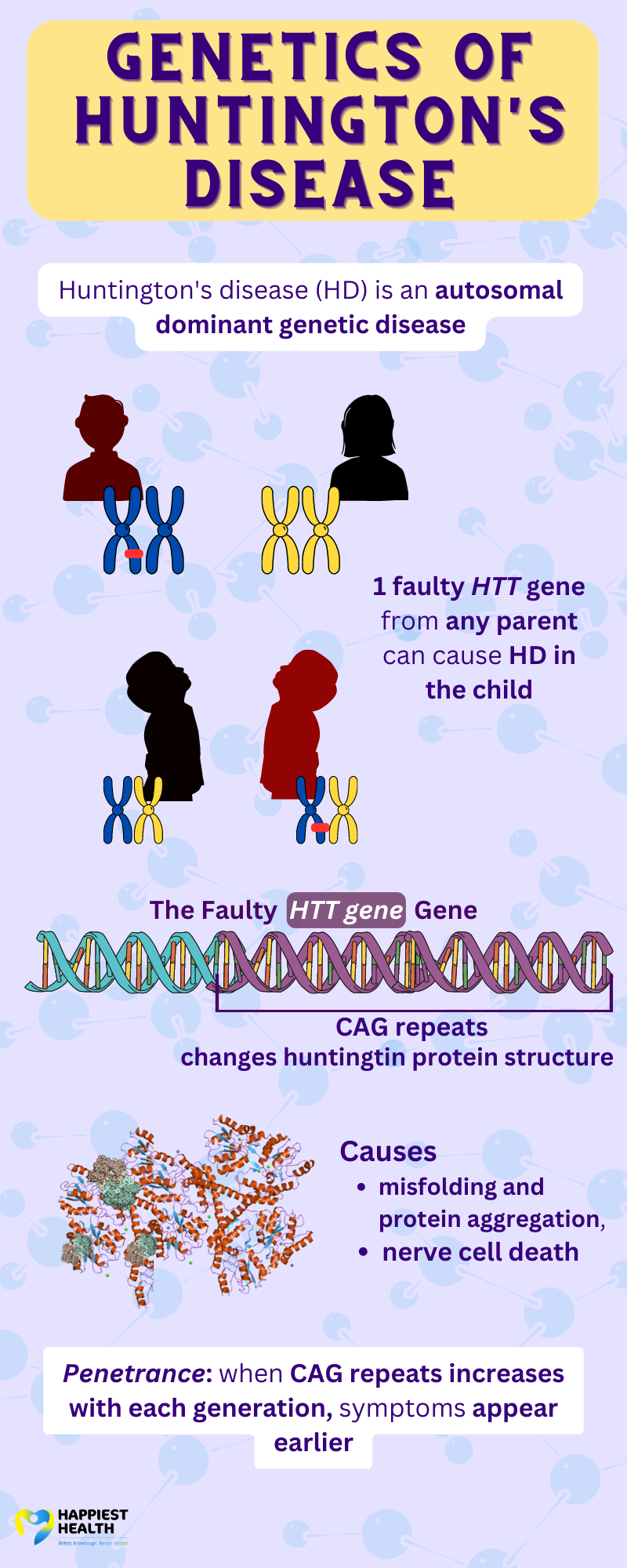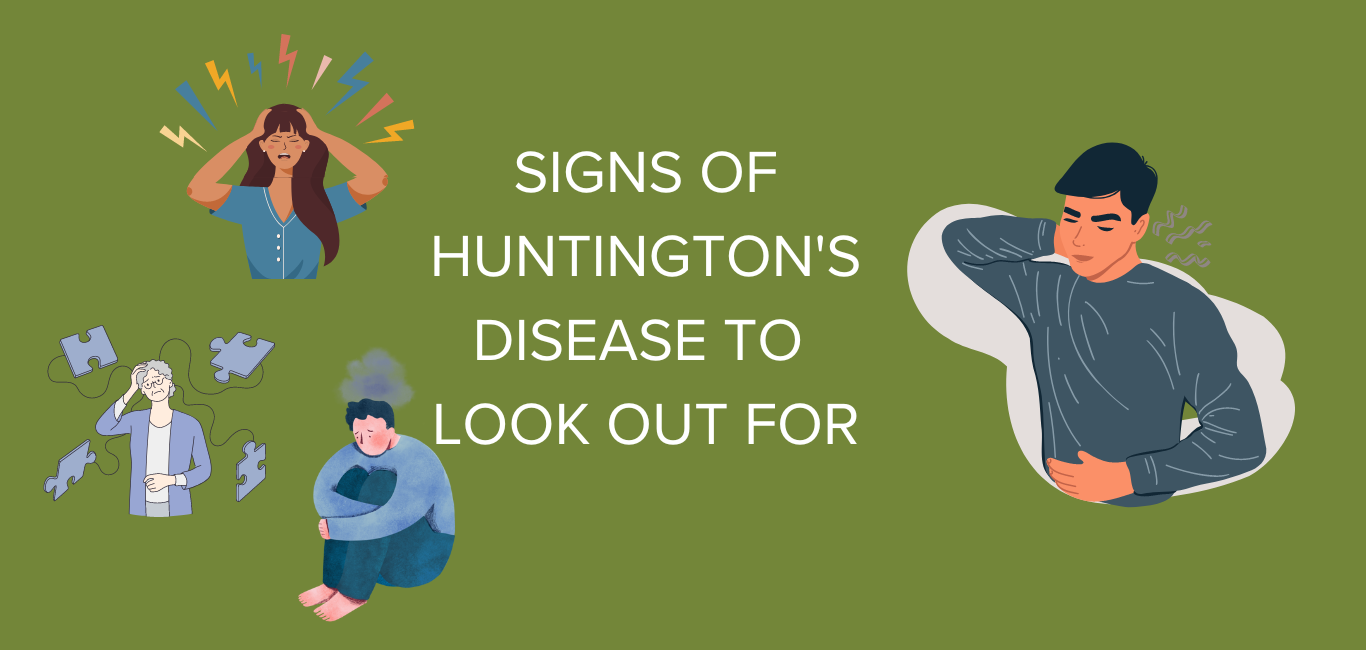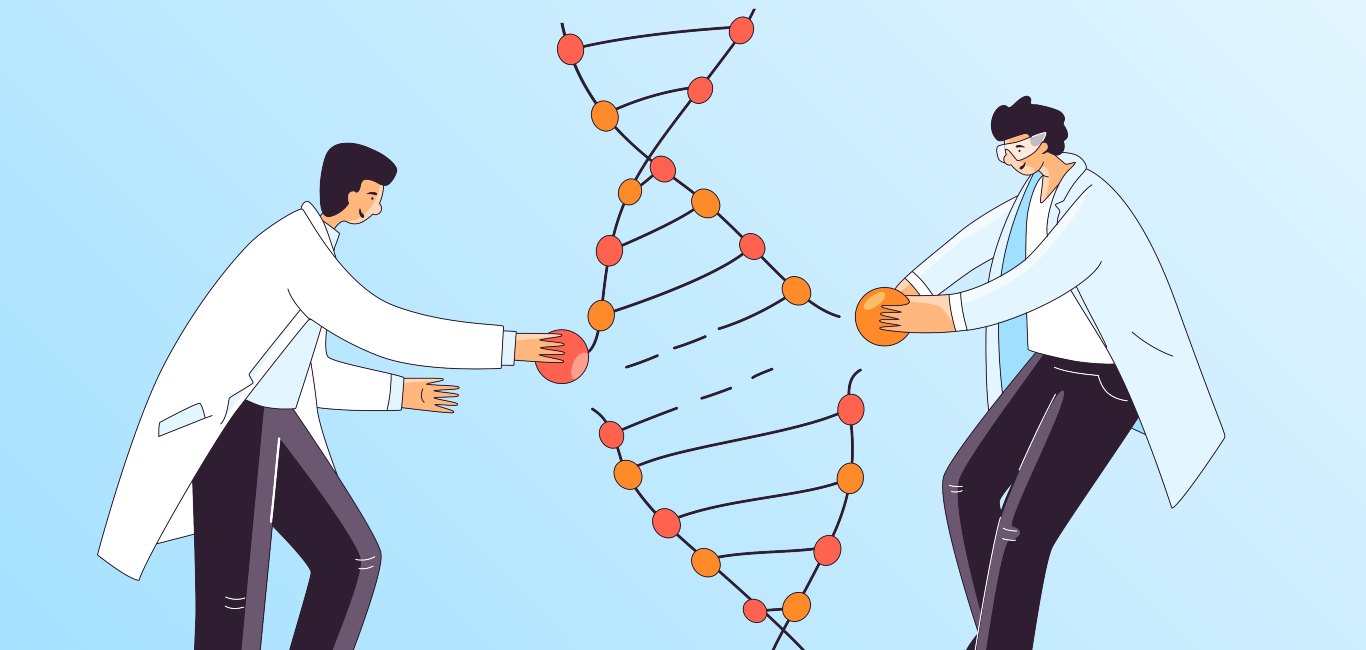We all carry traits from our parents, be it height, eyes, or behaviours. On the flip side, we also inherit health conditions from our parents. Huntington’s disease is one such genetically inherited neurodegenerative condition that manifests between 30-40 years of age.
Huntington’s is caused by an erroneous repetition of a DNA sequence – CAG – in the gene HTT. Most people generally have around 30-36 repeats. However, when the repetitions exceed 40, it causes a drastic change in the protein called huntingtin.
The abnormal huntingtin protein clumps with other necessary proteins in the brain cells like sticky glue, interrupting cell function and eventually leading to the death of neurons.
Huntington’s is an autosomal dominant genetic disease and passes on from parent to child. So the next generation needs only one faulty gene to show symptoms.

Read more: Signs to look for in Huntongton’s disease

















